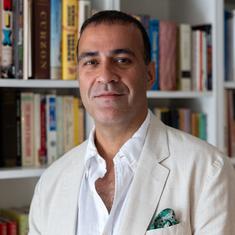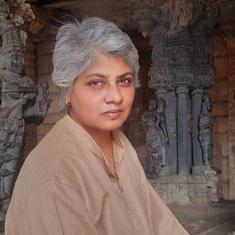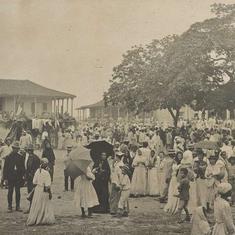It was going to be a busy day for Dr Asad Rahmani. As a member of the standing committee of the National Board of Wildlife, he was examining 16 development projects proposed inside or around wildlife sanctuaries, to be discussed during a scheduled meeting that day in October 2011. Three of these projects were proposed in the Andaman and Nicobar islands.
One proposal, from the Indian Navy, would involve the temporary use of Tillanchang Sanctuary in Little Nicobar to test a dummy missile, another, from the Border Roads Organisation, suggested a survey before the construction of a road through Galathea Bay in Great Nicobar, and the third, from the Indian Coast Guard, would entail the installation of a coastal surveillance radar and power supply source in Narcondam island, in the Andaman group.
Rahmani, who had been on the board since 2007, saw all three projects as detrimental to the unique bird and wildlife population of the islands. He told the other members present in the meeting that the “test firing was likely to have an impact on the life cycle of the megapode”, the location of the proposed road “was the nesting site of the leatherback turtle”, and given that Narcondam was the only home for the critically endangered Narcondam hornbill, “any activity that had an impact on this species should be viewed with utmost caution”.
After deliberations, the standing committee decided on a common next step for all three cases – a team that included Rahmani would conduct site inspections for the three projects, and submit a report to the environment ministry, which would take a final decision.
In the next few months, Rahmani visited the islands of Little Nicobar, Great Nicobar and Narcondam for the first time – each just for a few hours. He spotted 21 endemic hornbills in Narcondam. In Tillanchang, he watched in awe when a megapode, a mostly terrestrial bird found only in the Nicobar islands, took flight.
He included these observations in the reports that the team submitted to the ministry. The reports recommended the rejection of the Little Nicobar and Narcondam projects. The report on Great Nicobar noted that construction “should be allowed” with conditions, among them that it “should not become an excuse to revive the plan to develop a dry dock and refueling base for international shipping in Galathea Bay and making Great Nicobar a free port.” It added, that “after the construction of this road, all development activities should be defence and forest related”.
Based on these reports, the environment ministry rejected the proposal for missile testing at Tillanchang, and for the radar project at Narcondam. It issued an office memorandum in August 2012, noting that Narcondam island is the only home of the Narcondam hornbill and that the “majority of the nests…are located at about 200 meter height, which is generally the same area in the island which is to be used by the project for installation of RADAR”. It added that the project would cause “irreversible adverse impact on this unique bird, and can even wipe out the whole population of this bird, which is less than 350”.

Rahmani remained on the standing committee through the following year, but in 2014, a new committee was constituted after the Bharatiya-Janata-Party-led government came to power at the Centre. With that, as Scroll previously reported, deliberations on proposed projects reduced, as did the presence of independent members like Rahmani on the committee, while the proportion of projects that were being approved increased.
In 2021, around a decade after the ministry chose to protect the fauna on the Andaman and Nicobar islands, the committee stripped the protected area status of the Galathea sanctuary in Great Nicobar island to make way for the large transshipment port proposed as a part of the Great Nicobar development project. “My first reaction was that nothing is safe now,” Rahmani told Scroll. “Not even an officially recognised sanctuary.”
Concern from the start
Rahmani, whose career as an ornithologist began in 1981 when he joined the Bombay Natural History Society, recounted that conservationists had concerns about the project from the start. He said he “clearly remembers having many discussions” with his contemporaries in the late 1990s when possibilities of a large port on the island had begun to emerge. “I remember, we all were quite worried about any mega-project proposal in Andaman and Nicobar,” Rahmani told Scroll.
He added, “At that time, we could speak openly against such projects, but now everyone is afraid.”
While Rahmani’s primary interests were grassland and wetland birds, most prominently the Great Indian Bustard, over the years he visited the Andaman and Nicobar islands several times. These included site visits as part of the National Board of Wildlife, as well as trips independently and with associates for work on the Nicobar megapode, edible-nest swiftlets and Narcondam hornbills.
Rahmani recounted that he felt that his initial visits as a standing committee member were too short, and that he was certain he wanted to revisit the islands. It helped that one of his close associates was also working in the islands: Dr Ravi Sankaran, among the first Indian ornithologists studying the megapode in Great Nicobar, starting in the early 1990s. Rahmani travelled to the Nicobar islands several times, visiting Sankaran’s field station and learning more about his field observations.
Over these years of visits, Rahmani gained a greater understanding of megapode’s breeding and feeding behaviour, and of how the 2004 tsunami had affected the species. This study resulted in a chapter dedicated to the bird in his 2012 book titled Threatened Birds of India. He noted that as forests were converted to agricultural tracts and roads, the fragmentation of the bird’s habitat was a crucial challenge for its survival on Great Nicobar. “The most immediate threat to the Nicobars is the proposal to create a dry dock and refuelling/transhipment terminal base…in Great Nicobar for international shipping”, he wrote in the book.
He recounted to Scroll that “Ravi and his students had told me that most of the nests of Nicobar megapodes are found 100 metres-200 metres from the coast. So this mega-project will destroy many traditional nesting sites, as a huge coastline of Great Nicobar will be impacted.”
Rahmani was dismissive of the methods that the environmental impact assessment of the Great Nicobar project envisages to protect the megapodes, such as halting construction activities between November and February, reported to be the bird’s nesting period, and carrying out radio telemetry to learn more about the species’ behaviour, based on which strategies could be evolved to ensure their survival.
Rahamani described these proposals as “hilarious”. He said, “It is like murdering a person and then trying to find what killed him.”
The need for protected areas
In the past, Rahmani has recommended including the entire west coast and southern part of Great Nicobar island, currently listed as forest areas, in adjoining national parks.
Even now, Rahmani emphasises that the only way to ensure the protection of the megapode and other birds on the islands was to demarcate strictly protected areas and enforce restrictions within them. He noted that a community reserve model that envisioned the participation of tribal populations could help restore the habitat.
However, he added that the denotification of Galathea Bay National Park “does show the limitations of conservation”, given that the government can relatively easily tweak the status of protected areas.

Instead, he suggested that specific aims of conservation needed to be more deeply embedded in law. “In Bhutan, it is written in their constitution that a minimum of 62% of the land will always remain under forest cover in perpetuity,” he said. “We should similarly have some totally protected areas or no-go areas.”
Apart from current threats, Rahmani is also worried that development projects are restricting the possibility that wildlife can adapt to shifts, such as those caused by climate change. “For example, in the case of Nicobar megapode, if the coastline goes inland due to seawater rise, the bird will shift inside accordingly, but there should be natural space left for them to do so,” he said.
He added, “One of the best ways to face climate change is to leave natural areas, and also expand them, not to truncate them.”
Institutes losing independence
Rahmani also said he was concerned about the role of the Salim Ali Centre for Ornithology and Natural History, or SACON, in the Great Nicobar project. The centre has been tasked by the environment ministry with preparing conservation and management plans for the island’s fauna, to help mitigate impacts that the massive development project was likely to have.
The institute was formed in 1990 as a joint venture between the environment ministry and the Bombay Natural History Society and slowly gained a reputation as one of India’s best ornithological research centres. Sankaran was appointed its director in 2008, but passed away the following year. He led significant work that the institute did in the Andaman and Nicobar islands, including the only long-term ground research on edible nest swiftlets and megapodes in the islands.
In 2022, one of the conditions under which the Great Nicobar project received its environmental clearance was that SACON would work in close collaboration with the Wildlife Institute of India on several aspects of the project: specifically, to undertake risk assessment studies of hazards to birds that the project posed, help develop measures to mitigate against potential harm to megapodes and saltwater crocodiles, and to help with wildlife management in the premises of the proposed international airport.
But experts and activists do not hold out significant hope that the centre will issue any recommendations that run against the government’s thrust towards large-scale development work. This was because in 2020, as part of a measure to “rationalise” autonomous bodies, the union finance ministry recommended to the environment ministry that SACON be made a part of the “regular activities” of the ministry. In a step in that direction, by 2023, the environment ministry merged the centre with the Wildlife Institute of India, an autonomous institute under the ministry, transforming it into the institute’s “South India Centre.”
This, Rahmani said, severely curtailed the centre’s independence. “The institute is now under total government control, so scientists cannot say anything against the government,” he said. “I can say for sure that Ravi would have fought till the end, even if it required losing his job.”










